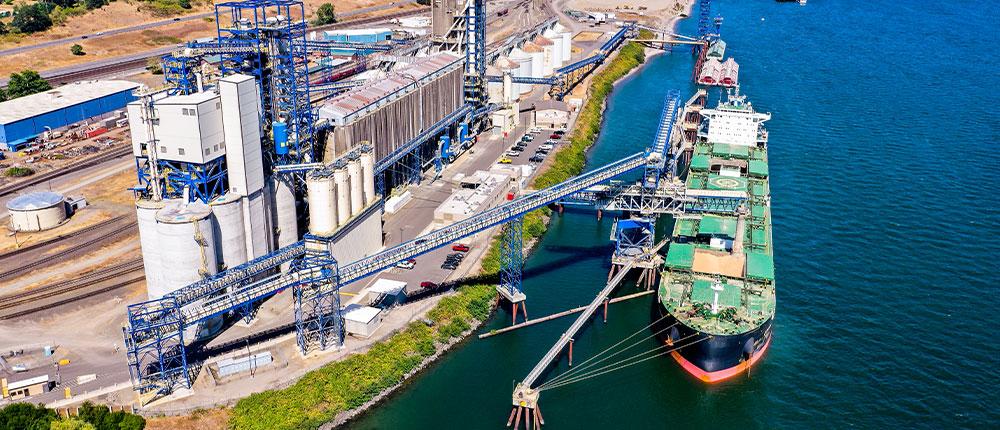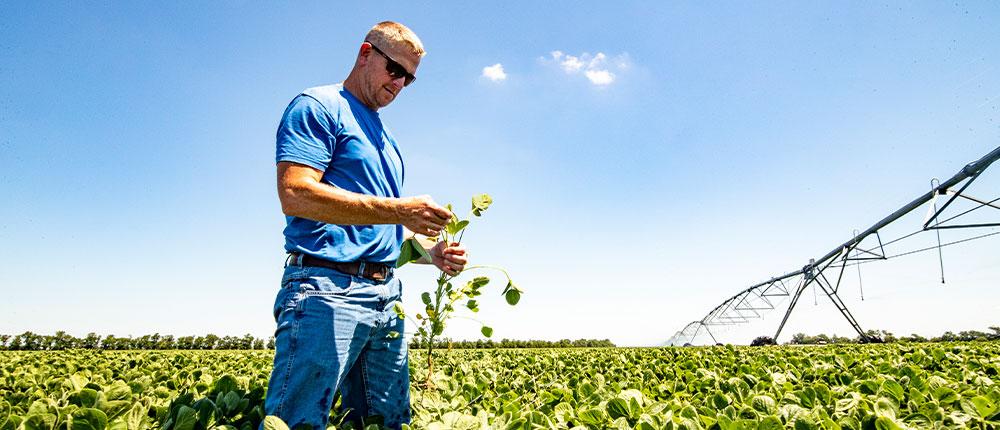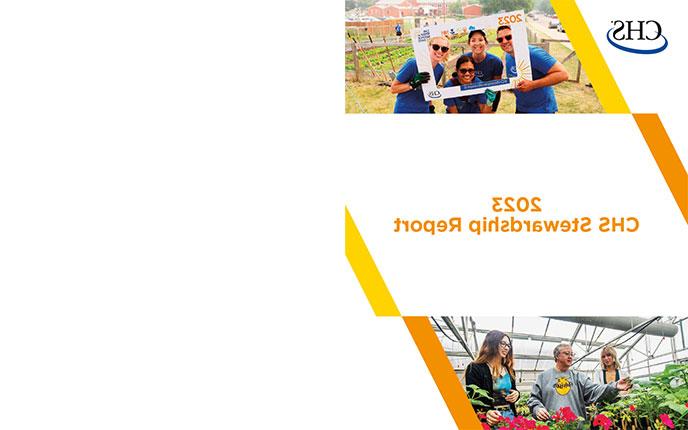Delivering results through TEMCO grain export terminals

Two ships are loaded with grain earlier this year at the TEMCO grain export terminal in Houston, Texas.
By Matthew Wilde
The Desert Harrier departed the TEMCO, LLC, grain export terminal in Houston, Texas, for Nigeria on May 14, 2023. It looked like any other ship steaming into the Gulf of Mexico, but its cargo — more than 1 million bushels of hard red winter wheat and spring wheat — was special.
Terminal Manager Michael Bates says it was the first wheat shipment entirely sourced by CHS that was exported from the facility after it became the fourth terminal in the TEMCO family in early 2023. TEMCO is a joint venture between CHS and Cargill that also includes export facilities in Portland, Ore., and Kalama and Tacoma, Wash.
Related: CHS Inc. and Cargill to expand TEMCO operations to include the Texas Gulf
The expansion will serve farmers and cooperatives in the Southern Plains, says Brian Schouvieller, who represents CHS on the TEMCO board of governors. Grain produced in that region naturally flows to the Texas Gulf for export.
“The Houston port gives us an additional export corridor to handle grain from beginning to end without sending it through a third party. That retains more value for farmers,” Schouvieller says.
The four TEMCO export facilities complement CHS export terminals in Myrtle Grove, La., and Superior, Wis., to provide efficient export options to benefit CHS owners and serve customers around the world.
“By expanding our integrated supply chain and export opportunities for the cooperative system, we improve market access and opportunities for farmers, which should increase the volume of patronage-eligible bushels exported through the Texas Gulf,” Schouvieller says. “Handling grain from the farm to the consumer through the cooperative system improves efficiency and quality control.”
| Houston, Texas |
Kalama, Wash. |
Portland, Ore. |
Tacoma, Wash. |
|
| Opened in | 1967 | 1962 | 1955 | 1975 |
| Joined TEMCO in | 2023 | 2012 | 2012 | 1992 |
| Primary products | Wheat, sorghum, corn, soybeans | Wheat, sorghum, soybeans, corn, peas | Wheat | Soybean, corn |
| Top export destinations | North Africa, China, Mexico, South America | China, Southeast Asia, Central America, Middle East | Southeast Asia, Middle East, China | China, Japan, South Korea, Taiwan |
| Storage capacity (in millions of bushels) |
6 | 6.5 | 1.3 | 3 |
| Grain loaded annually (in millions of bushels) |
140 | 250 | 35 | 200 |
| Loadout capacity (in bushels per hour) |
140,000 | 120,000 | 40,000 | 80,000 |
| Barges unloaded annually | N/A | 300 | 400 | N/A |
| Railcars unloaded annually | 40,000 | 62,000 | 600 | 52,000 |
| Shuttle trains unloaded annually | 480+ | 530+ | N/A |
N/A |
| Oceangoing vessels loaded annually | 100+ | 125+ | 40 | 100+ |
 |
 |
 |
 |
Options and opportunity
Multiple export facilities provide risk mitigation against weather events, logistics problems, operational interruptions and market changes, says Brian Kubik, TEMCO general manager. Through the TEMCO joint venture, CHS is one of the largest exporters of grain from the Pacific Northwest (PNW) to Asian markets.
TEMCO shipped more than 400 million bushels of grain from June 2022 through May 2023 and handles about one-third of the grain exported from the PNW.
With the addition of the Houston port, TEMCO is also the largest grain exporter in the Texas Gulf. The facility has 6 million bushels of storage capacity and annually loads more than 140 million bushels on 100 to 120 vessels. The primary crops shipped across all TEMCO locations are wheat, soybeans, sorghum and corn.
“The Houston expansion provides access to a larger basket of commodities, hopefully making us a more attractive trade partner,” Kubik says.

Reaching new markets
Tens of millions of bushels of wheat and sorghum are produced in Texas, Oklahoma and Kansas annually. Much of that grain is shipped via rail and truck to TEMCO in Houston. The facility’s railyard has been upgraded to hold 350 railcars and unload 250 cars per day.
“With four export terminals in various parts of the U.S. through TEMCO, we have more options and increased market discovery,” Kubik adds. “The shared supply chain made possible by the joint venture improves efficiency and reduces logistics costs, which benefits customers.”
That added strength will boost sales to Asia and emerging markets in Africa. While volume has dropped from expectations, China remains the largest importer of U.S. soybeans and sorghum.
Current projections indicate China will import 100 million metric tons of soybeans, 38.4 million metric tons of coarse grain (mostly corn and sorghum) and 12 million metric tons of wheat during the 2023-2024 marketing year, according to U.S. Department of Agriculture (USDA) data.
Africa will likely become a key market for international trade and investment over the coming decades, according to the USDA. In a February 2023 report, the agency cited rapidly increasing population and urbanization and rising incomes on the continent, which are driving demand for meat, cereal grains and other foods.
“Having access to a consistent berth in the Texas Gulf opens up new opportunities with customers in Morocco and other North African countries,” says Ryan Caffrey, who oversees the CHS wheat product line.

Trading up
Louis Deery, lead wheat trader for Star Trading based in New York City, says he expects to buy more wheat from CHS, thanks to the additional access to southern U.S. bushels and the opportunity to work with one company that has multiple ports in the PNW and Gulf of Mexico.
The trader bought the wheat loaded into cargo holds of the Desert Harrier for Flour Mills of Nigeria, one of the largest food companies in that country and Deery’s biggest client. In June, he purchased 850,000 bushels of hard red winter wheat from CHS for Flour Mills of Nigeria. All of it was shipped through TEMCO in Houston.
“We have to time our shipments very carefully, so dealing with one supplier and having more shipping options improves efficiency and adds flexibility,” Deery says, noting if a storm were to damage one port, grain could be diverted and shipped from another. “We’re also very cautious about grain quality, and CHS has a very good [quality] track record.”
Deery typically sources about 17 million bushels of wheat annually from the U.S. for Flour Mills of Nigeria. CHS and Cargill provide the “lion’s share” of the bushels, Deery adds.
“Further integrating the supply chain is good, since it helps bring the farmer a little closer to the consumer. That’s what consumers want,” he says. “Flour Mills of Nigeria is a fairly large durum wheat consumer and CHS is a big durum player, so I think [additional TEMCO shipping options from Houston] should open up more durum trade.”
Retaining value
Cooperative leaders in Kansas are excited about the integrated export opportunities for grain and improved revenue potential that TEMCO and its Houston expansion offers. They believe farmer-owners will benefit in several ways.
CHS and member cooperative Mid-Kansas Cooperative (MKC) expanded their grain marketing joint venture in April 2023 to maximize the value of an end-to-end cooperative supply chain in the Southern Plains. The TEMCO expansion will optimize the partnership, says Brad Stedman, MKC president and CEO.
Based in Moundridge, Kan., MKC handles about 100 million bushels of hard red winter wheat, sorghum, corn and soybeans each year. Wheat is the largest export crop for the co-op at about 15 to 20 million bushels per year.
In the past, grain was often sold to companies with export capabilities, so that revenue wasn’t fully realized at the local level, says Stedman. But the dynamic has changed, he says, because MKC farmer-owners now have direct access to international buyers through the cooperative system.
“Those profits flow back through MKC, which then flow back to our 11,000 farmer-owners in the form of patronage, equity redemption or building new assets such as shuttle train loading facilities,” he adds. “It’s going to enable us to move faster to reinvest in what is an aging infrastructure in this region.”
Many of those elevators were built in the 1950s and ’60s, he explains, when yields were less, and trucks and farms were smaller. “Farmers are sometimes moving faster than we are right now,” Stedman says.
CHS and MKC are building a grain terminal with 5.2 million bushels of capacity near Sterling, Kan., which is scheduled to be operational in 2024. It will efficiently load shuttle trains, like other jointly owned facilities in Milan and Canton, with combined storage of 18.1 million bushels.
Neil Johnke, CHS senior director of feed grains, says having multiple ports that can quickly unload shuttle trains, trucks or barges — all three in some locations — is an advantage for grain buyers and sellers.
“For a Kansas cooperative, if freight spreads tell us to take grain to either the PNW or the Texas Gulf to make $2 more per ton, we can do that. If ocean freight spreads are cheaper at Myrtle Grove, we can go there,” Johnke says. “It will make us one of the preferred suppliers in the world. Farmers will get to share in that entire supply chain profitability.”

Faster, stronger, better
Dale Schmidt recalls when the shuttle-loading facility jointly owned by MKC and CHS opened nearly 10 years ago in Canton, a few miles from his McPherson, Kan., farm. The basis for many commodities, particularly hard red winter wheat, narrowed about 10 cents or more per bushel. He attributed that to lower shipping costs and stronger demand from end users.
Schmidt will be watching for a similar effect once the Sterling shuttle loader is shipping grain to the Houston TEMCO terminal.
“When we can gain on basis, that’s really what it’s all about,” he says. “At the end of the day, whether I get paid more for grain or patronage, I’m seeing value come back to me.”
Schmidt produces hundreds of thousands of bushels of hard red winter wheat, corn and soybeans each year. Sorghum is occasionally part of the crop rotation when prices are favorable.
The potential for higher commodity prices is intriguing, agrees grower Jason Gaeddert of Buhler, Kan., but he says he’s equally excited about investments in the integrated cooperative supply chain.
“The turn time for trucks from the field to the elevator and back is important,” Gaeddert says. “Refreshing assets or building new assets helps the whole supply chain. That brings value to the farmer.”
Added value
Jeff Boyd, Garden City Co-op CEO, is excited about expanded export opportunities with CHS and the added value farmers will reap.
The co-op, based in Garden City, Kan., is building its first wholly owned shuttle loader facility with 1.1 million bushels of storage capacity in nearby Holcomb, Kan. It co-owns another similar transloader operation.
The co-op typically exports 20 shuttle trains each of hard red winter wheat and sorghum per year, plus ships some soybeans, says Boyd. A 115- to 120-car train carries about 435,000 bushels of wheat or soybeans and 465,000 bushels of sorghum.
Boyd says the ability to quickly fill trains with commodities lets the co-op leverage its grain origination and merchandising teams to reach more markets. With the expansion of TEMCO in Houston and the new shuttle loader projected to open in May 2024, he expects more grain to be shipped and marketed through the cooperative system.
“It allows us to control more of our own destiny,” says Boyd, who oversees 20 elevators in southwest Kansas with a grain capacity of more than 37 million bushels.
What does this mean for Garden City Co-op’s 1,350 farmer-owners? Boyd and Mike Wisner, vice president of grain, hope the enhanced opportunities mean better grain prices and larger returns on investment for co-ops and their owners.
“More direct access to global markets will give us the ability to set our bids accordingly and hopefully improve margins,” Boyd says. “The benefit of the cooperative model is that profits are shared with farmers — and that money stays locally.”
Check out the full summer 2023 C Magazine with this article and more.
Related stories:




